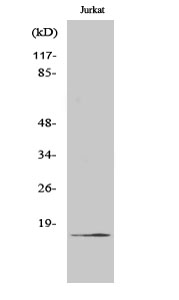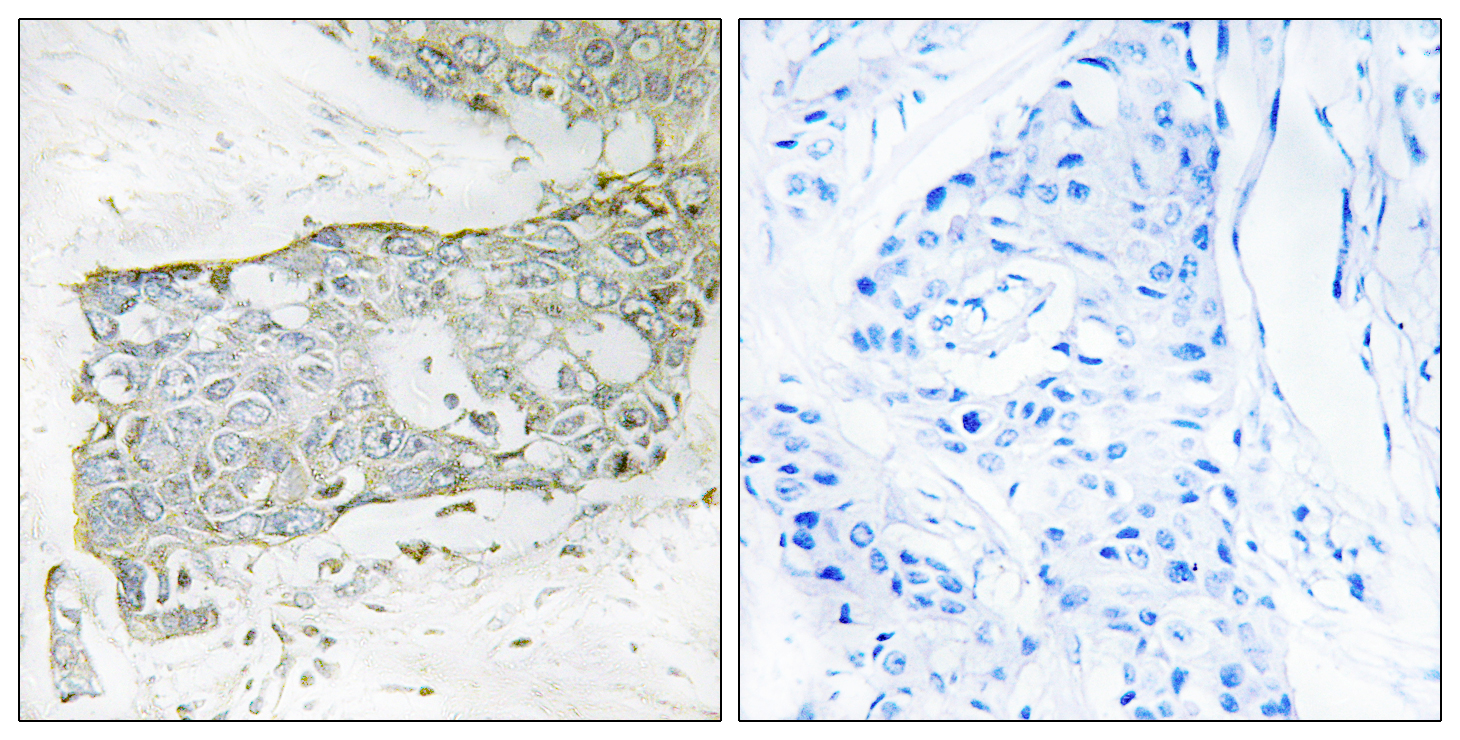Cleaved-Factor VII LC (R212) Polyclonal Antibody
- Catalog No.:YC0081
- Applications:WB;IHC;IF;ELISA
- Reactivity:Human;Rat;Mouse;
- Target:
- Factor VII LC
- Fields:
- >>Complement and coagulation cascades
- Gene Name:
- F7
- Protein Name:
- Coagulation factor VII
- Human Gene Id:
- 2155
- Human Swiss Prot No:
- P08709
- Mouse Swiss Prot No:
- P70375
- Immunogen:
- The antiserum was produced against synthesized peptide derived from human FA7. AA range:171-220
- Specificity:
- Cleaved-Factor VII LC (R212) Polyclonal Antibody detects endogenous levels of fragment of activated Factor VII LC protein resulting from cleavage adjacent to R212.
- Formulation:
- Liquid in PBS containing 50% glycerol, 0.5% BSA and 0.02% sodium azide.
- Source:
- Polyclonal, Rabbit,IgG
- Dilution:
- WB 1:500 - 1:2000. IHC 1:100 - 1:300. ELISA: 1:20000.. IF 1:50-200
- Purification:
- The antibody was affinity-purified from rabbit antiserum by affinity-chromatography using epitope-specific immunogen.
- Concentration:
- 1 mg/ml
- Storage Stability:
- -15°C to -25°C/1 year(Do not lower than -25°C)
- Other Name:
- F7;Coagulation factor VII;Proconvertin;Serum prothrombin conversion accelerator;SPCA;Eptacog alfa
- Observed Band(KD):
- 17kD
- Background:
- This gene encodes coagulation factor VII which is a vitamin K-dependent factor essential for hemostasis. This factor circulates in the blood in a zymogen form, and is converted to an active form by either factor IXa, factor Xa, factor XIIa, or thrombin by minor proteolysis. Upon activation of the factor VII, a heavy chain containing a catalytic domain and a light chain containing 2 EGF-like domains are generated, and two chains are held together by a disulfide bond. In the presence of factor III and calcium ions, the activated factor then further activates the coagulation cascade by converting factor IX to factor IXa and/or factor X to factor Xa. Defects in this gene can cause coagulopathy. Alternative splicing results in multiple transcript variants encoding different isoforms that may undergo similar proteolytic processing to generate mature polypeptides. [provided by RefSeq, Aug 2015],
- Function:
- catalytic activity:Selective cleavage of Arg-|-Ile bond in factor X to form factor Xa.,disease:Defects in F7 are the cause of factor VII deficiency [MIM:227500]. Factor VII deficiency is a rare hereditary hemorrhagic disease. The clinical picture can be very severe, with the early occurrence of intracerebral hemorrhages or hemarthroses, or, in contrast, moderate with cutaneous-mucosal hemorrhages (epistaxis, menorrhagia) or hemorrhages provoked by a surgical intervention. Numerous subjects are completely asymptomatic despite a very low F7 level.,function:Initiates the extrinsic pathway of blood coagulation. Serine protease that circulates in the blood in a zymogen form. Factor VII is converted to factor VIIa by factor Xa, factor XIIa, factor IXa, or thrombin by minor proteolysis. In the presence of tissue factor and calcium ions, factor VIIa then converts factor X to factor Xa by limited
- Subcellular Location:
- Secreted.
- Expression:
- Plasma.
- June 19-2018
- WESTERN IMMUNOBLOTTING PROTOCOL
- June 19-2018
- IMMUNOHISTOCHEMISTRY-PARAFFIN PROTOCOL
- June 19-2018
- IMMUNOFLUORESCENCE PROTOCOL
- September 08-2020
- FLOW-CYTOMEYRT-PROTOCOL
- May 20-2022
- Cell-Based ELISA│解您多样本WB检测之困扰
- July 13-2018
- CELL-BASED-ELISA-PROTOCOL-FOR-ACETYL-PROTEIN
- July 13-2018
- CELL-BASED-ELISA-PROTOCOL-FOR-PHOSPHO-PROTEIN
- July 13-2018
- Antibody-FAQs
- Products Images

- Western Blot analysis of various cells using Cleaved-Factor VII LC (R212) Polyclonal Antibody

- Immunohistochemistry analysis of paraffin-embedded human breast carcinoma tissue, using FA7 (light chain,Cleaved-Arg212) Antibody. The picture on the right is blocked with the synthesized peptide.

- Western blot analysis of lysates from Jurkat cells, treated with eto 25uM 24h, using FA7 (light chain,Cleaved-Arg212) Antibody. The lane on the right is blocked with the synthesized peptide.



